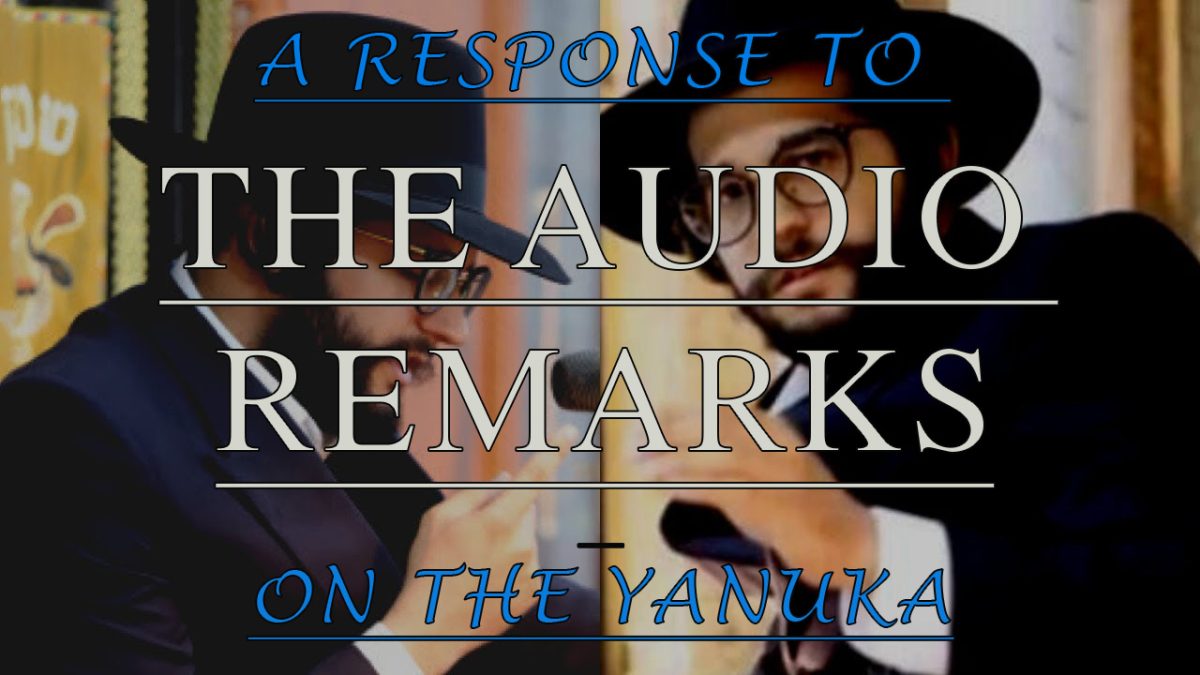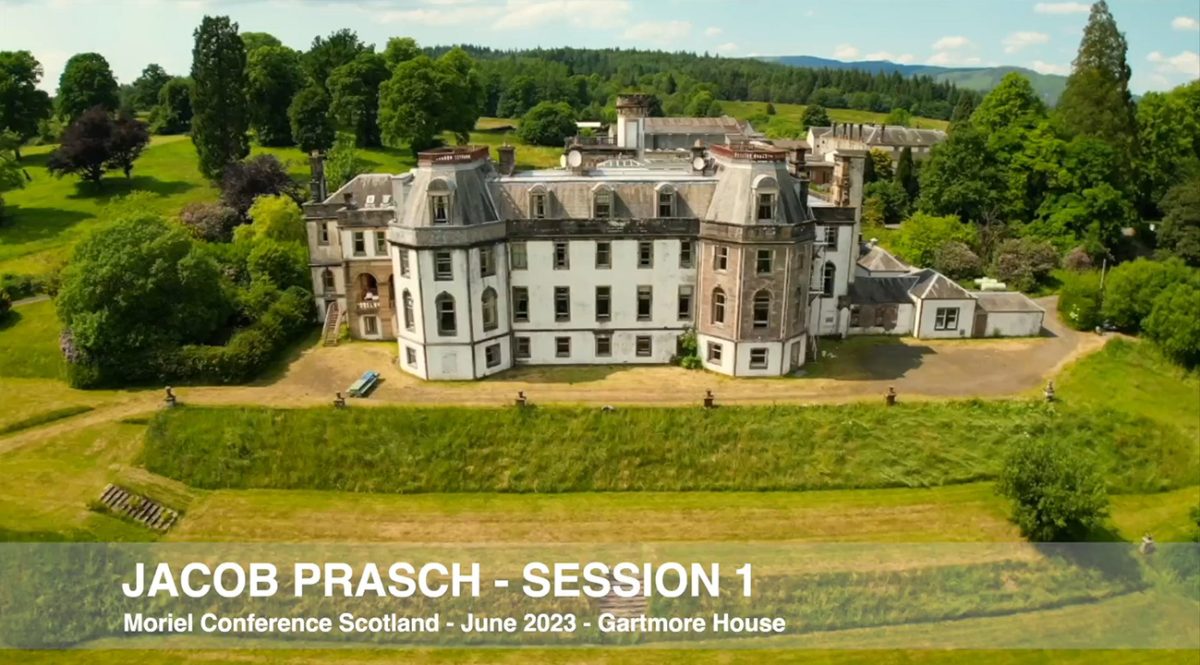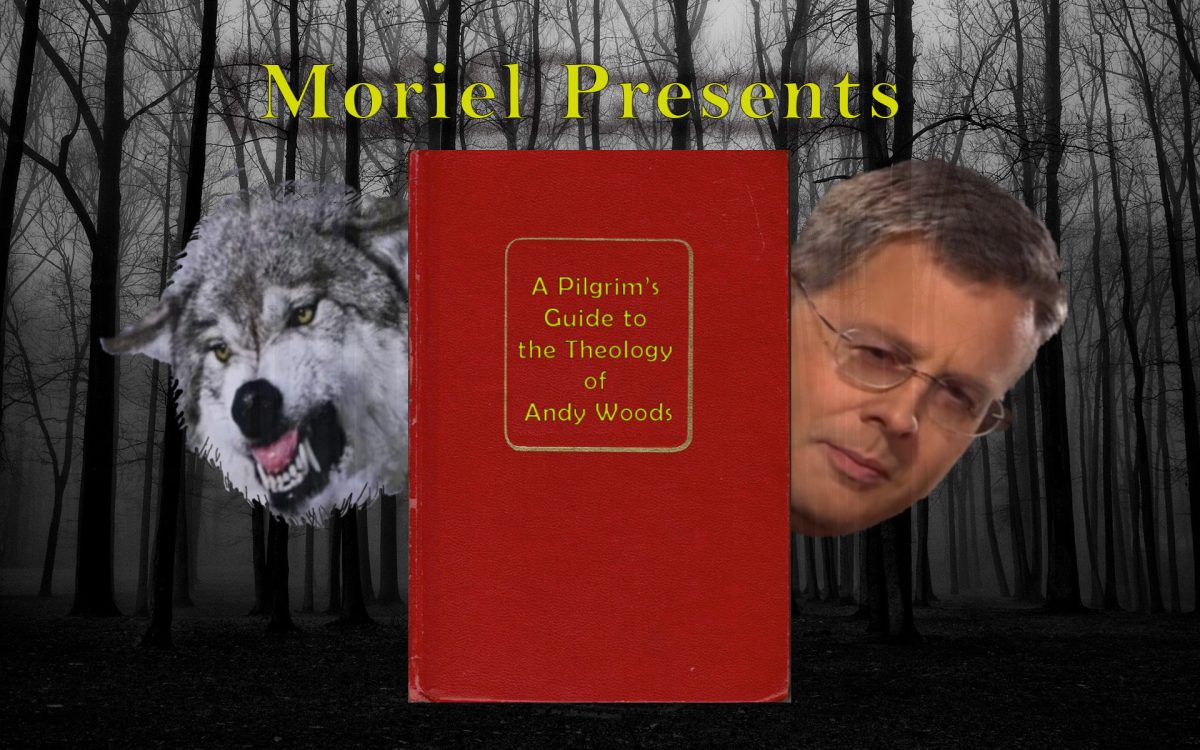What the Reformers Forgot Part 1 of 2
by James Jacob Prasch
For the days are coming, saith the Lord, when I will make a New Covenant with the House of Israel and the House of Judah – not like the Covenant that I made with their fathers. (Jeremiah 31:31).
Two thirds of Scripture is comprised of the Hebrew and Aramaic Old Testament writings called in Judaism by the acronym TENACH, meaning a combination of Torah (Pentateuch), Neviim (Prophets), and Ketuvim(literally “Writings”, such as Psalms, certain histories, and wisdom literature.)
Born again Christians generally accept that the primary aim of the Old Testament is to point to the coming New Covenant that would be implemented by the promised Messiah.
Romans 11 tells us that the invisible root of the church is Israel, so we can understand that the two thousand years of Old Testament history under the Law was laying the foundation for what would become the church.
Romans and Galatians tell us that the chief (but not only) purpose of the Law was to teach that we cannot be saved by it and so point us to the Messianic redeemer who would fulfil the law on our behalf and make atonement for our inability to uphold God’s standards by His own sacrifice on the cross for our sins.
Hebrews tells that the Levitical priesthood and temple system is a typology of Jesus our High Priest. Read in light of the gospels, the Patriarch Isaac and every prophet of Israel from Moses to John the Baptist is a prophetic type of Jesus, with their ministry, words, or life experiences foreshadowing Yeshua in some way.
The entirety of the Old Testament from Genesis 1:1, the non-canonical Jewish apocryphal writings, and a total of three thousand years of history, at least, from Abraham onward (but actually from the creation onward), all point to Jesus and the New Covenant He would give.
A cursory reading of Jeremiah 31:31 and it surrounding context reveals this passage to be the clearest prophetic prediction in the Old Testament that a New Covenant would be given and that it would be unlike the then existing old one.
What the Reformers forgot about Hermeneutics
Jeremiah 31:31 is the clearest prophecy in the Tenach that God would one day make a New Covenant.
In western Protestantism we have a very western perspective of Christianity and its historical development. Yet when we read the Book of Revelation, we see that Jesus shows us the church and its history not from a western or indeed any earthly perspective, but from an eternal heavenly perspective.
Hence, however important the lessons of church history, we need to observe and contemplate that history in a spiritual context from the viewpoint of scripture and not from a Hellenistic or occidental culture, nor through the prism of a Hellenistic or occidental concept of history and how to interpret it.
Revelation reveals to us the church and its role in a salvation history that theologians call Heilsgeschichte, as Christ sees it and chooses to reveal it to us.
The first thing that Jeremiah 31:31 tells us is that the New Covenant was made (literally “cut”) not with the predominantly western church, but with Israel and the Jews. The Hebrew term here for covenant is brit, meaning both “covenant” and “testament”. Thus, the New Testament is a Jewish covenant document for a new covenant, the same as Torah is a Jewish covenant document for the Old Covenant.
The New Covenant as a covenant was never made with the per se church to begin with, and its covenant document was similarly never given to or through the Gentile church, but through the faithful remnant of Israel whom at that time constituted the primitive Jewish church.
The Reformers failed to redress and correct the replacement theology of Roman Catholicism; instead they wrongly replaced Israel with a Protestant church instead of a Roman one.
They also, like Romanism, began to treat a Jewish covenant document as a Greco-Roman one in the manner in which they understood and interpreted it.
While the Book of Revelation, for instance, is in the apocalyptic genre that evolved through combining both Hebraic and Hellenistic literary forms during the intertestamental period, its imagery and typology are strongly Judaic.
The appearance of Yeshua as High Priest in Chapter 1, in a Levitical setting, gives us a pictorial revelation of Jesus as High Priest that Hebrews gives us as a doctrinal revelation. Later in Chapter 3 in the message to the Church of Philadelphia we see Yeshua in a Davidic role.
Throughout Revelation we see thematic and typological replays of the creation motif from Genesis, and motifs from Exodus, Joshua, Daniel, Ezekiel and other Old Testament Books.
As with John’s Gospel, Matthew, James, 2 Peter, and Hebrews – Revelation is a book with a Hebraic literary orientation, although the church is predominantly Gentile.
In other words, God relates His final message to the church through Hebrew eyes.
This relates to Paul’s description of our salvation to both Jew and Gentile believer as a recapitulation of the Hebrew Exodus (1 Corinthians 10:1-3), and to Paul’s teaching on the final state of church as rediscovering its Jewish root (Romans 11:18 & 25).
The Scriptures also describe Christ’s relationship to, and coming for, the church as a Jewish matrimony (Revelation 20, Song of Solomon, Ephesians 5, Matthew 25).
Repeatedly, God in His Word reveals the essential truths of His relationship to the Church within a Judaic frame of reference, and God’s revelation of the eschatological destiny and history of the church as seen in Revelation is no exception.
The problem we address here is that, with a few exceptions, the mainstream Christian traditions that sprang from the Reformation depart from scripture and do not do this; they simply ignore the Judaic content and treat it as Hellenistic literature. While we can appreciate some of Luther’s reasoning (as Revelation’s message was partially for an appointed time), he rejected the book of Revelation as use-less and uncanonical.
The Swiss Reformers largely were radical preterist historicists seeing Revelation as having had a total, instead of partial fulfillment in the early church and a continuous meaning throughout church history, simply spiritualizing away the elements which had no parallel or historical fulfillment in the early centuries of Christian history.
It is both ironic and contradictory that since a cornerstone of Reformed theology (due to influences of 16th century humanism) was a stoic hermeneutical approach to biblical interpretation taking a strict grammatical-historical line, Re-formed theology departs from its own principles and automatically ‘spiritualizes’ anything about Israel as being for the church.
It does so moreover, not seeing the text applying additionally to Israel as well as to the church, or by a qualified application to the church by way of principle or figure, while retaining the original meaning for the Jews in theSitz im Leben (the cultural and historical setting a text is addressed to and written in) of the text.
It rather does so in the stated replacement of Israel and the Jews by a mainly Gentile church owing little or nothing to its biblically stated Jewish roots – in direct contravention to Romans 9-11. This becomes particularly strange since Luther regarded Romans to be the very heart of scripture and its message, yet his thinking virtually omitted the plain teaching of chapters 9 to 11.
It is also strange that – in their proper reaction against the medievalscholasticism of the Roman Church with its peculiar form of papalgnosticism (later defined as “Sensus Plenior”), where typology and allegory were used to illustrate and illuminate doctrine and not base doctrine on it – the medieval church formulated doctrines to please itself by wild allegorization.
Indeed, we see the same practices continuing today not only in Roman Catholicism, but in the neo-gnosticism employed by the Vineyard Movement and by such New Age influenced pseudo Christian groups as ‘Promise Keepers’ who build their case not on exegesis (reading fromScripture) but eisegetical (reading into Scripture) allegorization.
So, reacting against these abuses of typological and allegorical method, many upright conservative evangelicals today will act in the same manner as the Reformers did – they simply throw the proverbial baby out with the bath water.
Consequently a Jewish Bible is divorced from its own cultural roots and interpreted outside of the framework in which it was given by methods devised in the 16th century by humanists.
These grammatical-historical methods are adequate for reading the epistles as letters.
The epistles provide the apostolic prism through which other scripture is to be read. But the epistles themselves use Midrash, typology and allegory in commenting on other scripture such as narrative, apocalyptic and Hebrew poetry.
Grammatical-historical methods are essential and adequate to comprehend basic biblical truth such as the way of salvation and Christian conduct, but in-adequate to grasp the deeper things contained in the Word of God such as Ezekiel, Revelation, Zechariah, and the invisible thread of eschatological undertone that runs through the gospels when viewed from an ancient oriental Jewish perspective instead of a Hellenistic western perspective.
Understanding the complete meaning in these texts will be increasingly important as we approach the parousia with more and more overt signs of the return of Jesus on the horizo
n.
This has nothing to do with the Alexandrian or even Antiochan schools of the early church, or the writings of Philo, or the Christianised gnosticism ofOrigen. Nor have Midrashic “Pesher” interpretations anything to do with a papal Sensus Plenior.
It has to do with interpreting the Word of God within the parameters in which God gave it.
Strict models of adherence to grammatical historical exegesis was designed by the reformers as a safety mechanism to protect us from deception. Too often, the instrument of protection has become an instrument of deception in itself.
We must remember that the reformers were humanists and their exegetical approach is humanistic, meaning it is man centered.
While we do ask God to guide us in the our interpretation of His Word by His Spirit, grammatical-historical exegesis applied in isolation from Second Temple Period Jewish hermeneutics has reduced understanding the Bible to a mere intellectual exercise.
Utterly atheistic liberal scholars, who are secular humanists (unlike the reformers who were Christian humanists) misuse these same grammatical-historical methods to construct Satanically inspired apostasy.
Shall we reject grammatical-historical apostasy because James Barr uses it to demonstrate what he sees as the folly of evangelicalism (which he derogatorily labels “fundamentalism”)? Of course we should not.
The epistles should be read as letters and no other method would be valid for interpreting the epistles. Even in handling other forms of biblical literature, while we must use Midrash, midrashic method does not invalidate grammatical-historical method; it simply sees it as the first step.
We should not reject the validity of the grammatical-historical method because of its misuse by apostates. By the same token, neither should we reject Jewish hermeneutics.
As with the Gifts of the Holy Spirit, Satan only corrupts things worth corrupting. Despite its limitations, we should not reject the grammatical-historical approach of interpreting the Bible handed down to us by the Reformers simply be-cause unbelievers corrupt and misuse such methods to engineer heresy, and neither therefore should we reject Jewish hermeneutics because cults, or Romanism, or liberal higher critics, or latter day gnostics like John Wimber or Promise Keepers misuse allegory and typology to engineer error and deception.
While the problem has its origins in the Reformation, we still see it currently with other-wise good evangelical scholars such as Dr. Walter Kaiser (who is not even a replacementist), and various Reformed theologians (most of whom are replacementists).
These brethren, to their credit, strive to uphold biblical orthodoxy against heresy and unbelief, but in the process, like the Reformers, treat a Jewish book as a Hellenistic one, losing sight of the root and missing the depth of content which is found when the texts are read through a more Hebraic understanding of the Christian Faith.
Like certain messianic writers in the Mishkan theological journal, I have always found the ideas of Roy Blizzard and David Bivin implausible and the amount of attention their work receives as being out of all proportion to what it warrants. Others in the Jerusalem School, such Joseph Frankovicwho (while admittedly having a very long way to go in the use of Jewish hermeneutics in the New Testament) is at least asking the right questions.
Other messianic scholars such as Dwight Pryer and Arnold Fruchtenbaum, while not focused on Jewish hermeneutics, are well focused on Jewish Sitz in Leben and are finding parallelisms between early rabbinic and early Christian thought, and viewing the New Testament in that light. Hence, we see some bona fide progress in rediscovering the Jewish roots, and not just a lot of the nonsense that transpires on the extreme axis of the messianic movement, where an attempted repackaging of Hebrew Christianity in the wrappings of “yitishkeit” (Ashkenazi diasporic Jewish culture) is attempted – lifting up Jewishness, instead of ‘Yeshuaness’. Yitishkeit is anyway but one expression of Jewish culture.
While a proper messianic synagogue “siddur” liturgy, led by a proper messianic rabbi and kantor(such as Stuart Dauerman in Los Angeles or atNetiv Ya in Jerusalem), may be of missiological value in recontextualizing the gospel message to see Jews saved, Yitishkeit is not the original culture of the Bible and is of very little value in rediscovering the Hebrew roots of our faith.
Yitishkeit is no substitute for a Holy Spirit directed scholarship to unveil the Jewish character of the Word of God, and our capacity to properly understand it as its divine author intends it to be under-stood. The mysteries that the faithful church are intended to understand concerning the Last Days, and how to prepare for them, are in the Apocalyptic books of the Bible and are sealed up until the appointed time (Daniel 12:4).
They will never be unsealed until the Hebraic roots of our faith, the Hebraic character of scripture, and the Jewish hermeneutics used by Jesus and the apostles are rediscovered.
Astonishingly and impressively, it was actually Reformed theologians – the Puritan fathers, such as John Lightfoot and John Robinson who at least began to realize these truths over three centuries ago.
In Reformed thinking, correct biblical exegesis is a matter of God using human intellect through the grammatical-historical exegetical method, which shuns spiritualization in reaction to the gnosticism of medieval Roman Catholic scholasticism (which often constructed doctrines out of wild allegorical interpretations resembling Philo, but having little in common with the Hebrew allegory and typology of scripture or the clear uses of Jewish Midrash in the New Testament’s handling of the Old).
Yet, when it comes to Israel and the Jews, Reformation theology winds up doing the very things it set out to correct – they spiritualize the meaning, allegorically reading into the text what is not in there; Israel becomes the church to the negation of what the text literally says. Instead of Christians being spiritually grafted into Israel as the New Testament teaches (Romans 11), in this error the church replaces it.
Instead of applying what the text says to the church in addition to applying it to Israel, like the super-cessationist Roman church with its replacementism, they simply allegorize it in violation of t heir own principles.
Curiously however, they do not do this consistently (another flagrant violation of their own principles as grammatical-historical exegesis in theory demands consistency in approach); they will only do it where it pleases them. For instance, to them the curses of the Old Testament remain literally for Israel, while the blessings are spiritualized for the church – despite the fact that most of western Christianity is as backslidden and rejecting of the true Christ as Israel and the Jews ever were.
God is a God of justice who hates unjust scales (Proverbs 11:1).
If He is finished with the Jews, I would like to know just one reason why He should not also be finished with the church.
Fortunately for Israel and the church, the validity of a divine covenant depends not on the infidelity of man, but rather on the fidelity of God.
True, God turns His grace for a season away from Israel towards the Gentile nations (Romans 11:19-20), but this is both partial and temporary (Romans 11:25-29).
A time comes, and is already arriving, when God turns His grace away from the nations back towards His ancient people Israel (Romans 11:25); yet who would ever suggest on this basis that Israel will replace the church?
What the Reformers forgot about Covenant and Ecclesiology
Jeremiah 31:31 tells us the New Covenant will not be like the one God made with the Patriarchs of Israel or Moses.
Jeremiah was up against the problem of a theocratic state gone wrong. People were circumcised as babies and because they were incorporated into the national covenant, assumed that they were in a right relationship with God.
Other prophets like Amos were up against similar problems – people brought their sacrifices to the temple forgetting that these needed to be accompanied by genuine faith and repentance for their offerings to be accepted.
John the Baptist was up against the same situation of certain people thinking that, because they were biological descendants of Abraham and the fathers and circumcised into the covenant, they were automatically included in a right covenant relationship.
The New Covenant to be inaugurated by the Messiah would correct these is-sues because it would not be a covenant of automatic corporate inclusion based on national, ethnic, or cultural identity, nor on the faith of one’s parents – but rather individual response to the gospel.
Hence, New Birth would not be of man’s will. Regeneration would occur as a result of the sovereign grace of God drawing someone to Jesus personally and their individual response to Him, by which God’s Law would be written on their heart.
Anglican errors
Yet, as one example, we see that in the old Anglican Book of Common Prayer in the baptismal liturgy, a baby is pronounced “Born Again”, and his or her parents told that the baby is a Christian because of the parent’s decision and being born English into the English National Church.
Contravening what the New Covenant was to be, baptism is wrongly equated with circumcision, and a child is pronounced a Christian through the actions of his parents – that is, being reborn by the will of man instead of by the will of God, in direct rejection of John 1:13.
Thomas Hooker proclaimed “A member of the Church of England is a citizen of the Commonwealth, and a Citizen of the Commonwealth is a member of the Church of England”, equating a state church with its monarch as head, to Israel and the House of David.
What we in fact have is a Regal Papacy where the next titular head of the Anglican Church, Prince Charles, is a divorced New Ager with a combination of Buddhist, Hindu, and Islamic beliefs. For all of its errors, the Continental Reformation was the result of Christian conviction.
In England however, it is an historical fact that the Church of England was born out of the whoredom of a despotic womanizing king who murdered 70,000 of his own subjects.
The English Reformation began as a result of the ambitions of Henry VIII. Absurdly, the British Monarchy still retains for itself the title “Defender Of the Faith”, a title awarded by the pope for the persecution of Protestants.
Today, members of the British Royal family convert to Catholicism, the Arch-bishop of Canterbury marches in a pro-cession to Mary in Walsingham calling for reunion with Rome, while the Queen has appointed a Roman Catholic priest as Court Chaplain. Indeed, with the mass martyrdom of Evangelical Anglicans (such as Nicholas Ridley, Hugh Latimer, John Hooper, and Thomas Cranmer) by Queen Mary at the behest of the Roman Clergy after the death of Henry VIII, a doctrinal reformation in Anglicanism took place.
But the institution began for political and not theological or moral reasons. And now, with the theological and moral erosion of the Royal family, it is becoming politically expedient to return to Rome, as it appears there are no longer any doctrinal or ethical reasons not to do so.
Anglicanism was born from Rome (and not from scripture), it doctrinally and ecclesiologically never fully broke with Rome, and to Rome it is now returning. The root of this dates back to the shallow doctrinal foundation laid by the reformers that finally caved in.
Many errors result from this for Anglicans, and other mainstream Protestants, that non-conformist churches holding to believer’s baptism avoid.
When a young Anglican who is pronounced “Born Again” as a baby actually becomes “Born Again” and able to accept Jesus personally, which new birth proclamation does his church wish him to believe is valid?
Was his vicar telling the truth when he told him he was a Christian and born again as a baby, or rather when he actually became a new born believer?
Telling people they are Christians when they are not (and actually still need to become Christians) is a sure barrier to seeing souls saved.
The mainstream Protestant churches founded by the reformers all have this structural dilemma.
British Israel?
Another error deriving from not recognizing that the New Covenant is made with Israel is the deception among Anglo Saxon and Anglo Celtic Protestants of British Israelism, which has no biblical or ethnological basis whatsoever, and where, once again the throne of David is linked with a British Crown.
James McConnell (who comes from a Sabellian heresy background with a ‘Oneness’ view of the Trinity, instead of an Athanasian view of Three Persons in One God – it is unclear if he believes in the Trinity biblically, or if he believes that the Father, Son, and Holy Spirit are all Jesus) is a case in point.
McConnell, pastor of Whitewell – the largest Elim church in Belfast, openly challenged anyone to publicly debate him on his doctrine that the Bible teaches that the British are the ten Lost Tribes of Israel. This idea was accepted by Elim’s founder, George Jeffries, but rejected by Elim as a movement, even though the teaching came from Jeffries. Now Elim’s current leadership – courtesy of McConnell – gives place to it.
State Religion & False Doctrine
Anglicanism is but one expression of the errors of the Reformers. Presbyterian, Lutheran, and Reform churches all have the same built-in error – a state church where people become members, not by new birth, but by being born into a state church and culture, and having an initiation ritual performed as babies.
The precedent was not established by Hooker, but by Luther.
In order to genuinely reform the church along biblical lines, the first thing the reformers would have needed to do was dissolve the unscriptural Erastian marriage of church and state, and condemn as false Augustine’s Cyprianic Doctrine of the Church, which sought to justify it.
Along with this, they would have needed to restore a biblical understanding of believer’s baptism as the Baptist sects (who the Protestants normally hated) did.
Luther instead taught Cuis Regio Eius Religio (“What your government is, so your religion is”) – if your government is Roman Catholic, so are you, and if Protestant, so are you, and continued sprinkling infants, pronouncing them “Christian” by the will of man instead of by the New Birth through the Will of God. The Reformers failed to reform beyond a very correct but inadequate level.
Where does this error originate?
“The church”, by Greek definition ecclesia, means “the called out ones”, who may have to leave their culture, family, etc., to become Christians and thus members of the true church (Matthew 10:35-37).
The church is not those born into a national cultural-religious identity, but Born Again, quite possibly, out of their temporal, cultural and religious identity – even when that identity is nominally Christian.
The error has its source with the Emperor Constantine when he made Christianity into a religion of the state, and the false doctrine of Augustinecalled “The Visible and Invis
ible Church”, which sought to justify turning biblical Christianity into a national and cultural Christendom. Augustinedrew many unbiblical and unfortunate mistakes together to rewrite Christianity as a hierarchical and Platonic religion. He drew on the errors of his mentor, Ambrose, the mistaken influences of Cyprian of Carthage, and even imported certain gnostic influences into western Christianity from Alexandria, and embraced Alexandrian ideas of Christology and Pneumatology from the Council of Chalcedon which, although not heretical, were plainly wrong and problematic.
This doctrine said the church was made up of the saved and unsaved, instead of an exclusive fellowship of those personally professing a saving faith through the new birth. It did this by twisting the parable of Matthew 13:38-42 out of context to say that the field where both were planted was the church, when in fact Jesus said it was the world.
Thus, instead of allowing the saved and unsaved to grow up together in the world for Jesus to sort out upon His return, true and false Christians would be together in the church for Jesus to sort out upon His return.
This is not to suggest there were not false believers in the pre-Augustinian church, but rather entrance was to be the result of personal regeneration of which baptism was to be the emblem.
There are two types of biblical passages dealing with baptism: those supporting believer’s baptism and those which are ambiguous.
Instead of interpreting the ambiguous passages in light of the unambiguous, the illogical practice of casting doubt on the clear meaning of the unambiguous by seeking to interpret the unambiguous in light of the ambiguous becomes wedded to eisegesis (reading into the Bible what is not in there) as a means to construct an argument which amounted to going back under the Old Covenant.
We must remember Satan’s first at-tempt to destroy the church was to Judaize it (see Galatians).
By making the church the new Israel (Romans 11 speaks the language of incorporation, not replacement) and equating baptism with circumcision, the church is Judaized.
What Jeremiah and John the Baptist say Christ would come to undo, and what Paul says Christ did undo in Romans, Constantine and Augustine put back. From here, the medieval papacy evolved into the debacle that the Reformers re-acted against.
Yet, instead of truly reforming the church by removing the error, they too put it back.
Thus, in order to truly reform the church and restore biblical Christianity, the first thing the Reformers would have needed to do was to break the unscriptural marriage between church and state, reject the Augustinian error of the visible and invisible church designed to accommodate this illicit marriage, and reject the baptism of unregenerate babies (whose sins anyway God does not take into ac-count) that was its emblem.
By failing to understand the Jewish root of the church and failing to understand the new Covenant as a Jewish Covenant, with the New Testament as a Jewish Covenant document, the Reformers failed to restore biblical Christianity.
They did restore justification by faith and the supremacy of scriptural authority against tradition, but by no means could they have restored the church to its actual Apostolic foundations without re-discovering that the foundations of the church in Christ are Jewish.
Consequently, nominal Protestantism is as much a problem as nominal Old Testament Judaism ever was.
Liberal Protestantism is also as much a problem (and a heresy) as Roman Catholicism ever was.
While the news media accurately reveals the Roman Catholic priesthood as a flood with criminal homosexual paedophiles and dangerous perverts of every description, even the Roman Church as an institution would not sanction a Homosexual and Lesbian service in one of its cathedrals as the Anglicans have done, or officially sanction sodomite clergy like the Methodists.
Howbeit, for their own self-serving reasons, the Roman Church for decades, formally at least, refused to tolerate Free-masonry, while masonic membership ran wild among the Reformed and Presbyterian clergy, and often still does.







